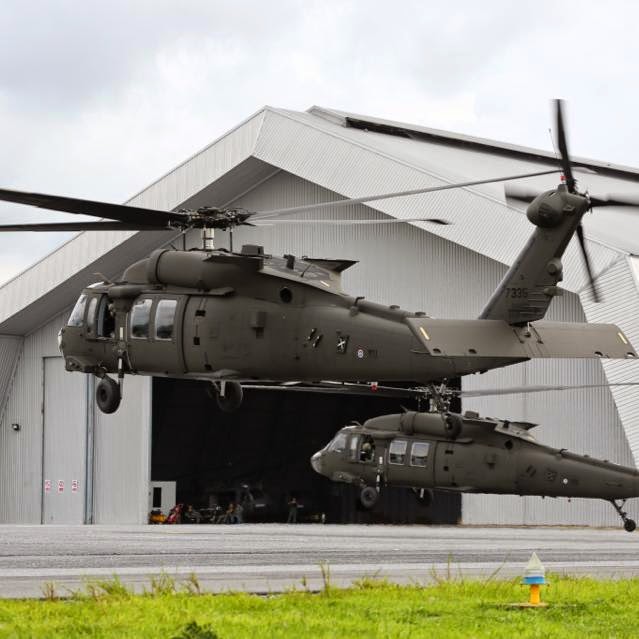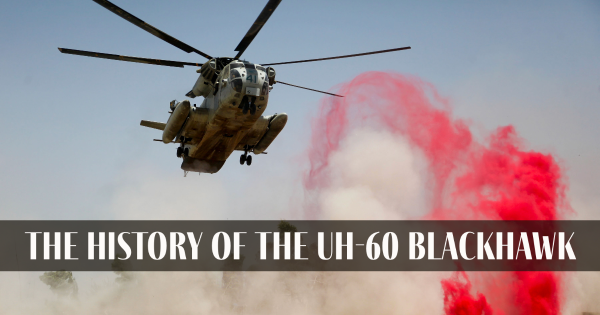Unlocking Peak Performance: UH 60 Helicopter Upkeep Guide
Unlocking Peak Performance: UH 60 Helicopter Upkeep Guide
Blog Article
Comprehending the Mechanics and Engineering Behind Uh 60 Helicopters
The UH-60 helicopter, commonly called the Black Hawk, stands as a peak of modern-day rotorcraft innovation, embodying a mix of robust engineering and elaborate auto mechanics. From its beginning to its current iterations, the development of this airplane showcases a blend of innovation and usefulness. As we peel off back the layers of the UH-60's layout, a globe of complex systems and thorough design comes to light. Recognizing the mechanics and design behind this functional aircraft introduces a realm where accuracy fulfills power, and where each part plays a vital function in accomplishing trip.
Background of UH-60 Helicopters
The background of UH-60 helicopters traces back to the late 1970s when the USA Military sought a innovative and functional energy helicopter to change its aging fleet. In reaction to this need, the Sikorsky Airplane Company developed the UH-60 Black Hawk helicopter. Introduced in 1979, the UH-60 quickly came to be a staple in armed forces operations due to its remarkable abilities.
The UH-60 was created to master a variety of goals, including army transportation, medical evacuation, digital warfare, and unique operations. Its capacity to adjust to different duties made it a beneficial possession to the united state Army and other military forces all over the world
For many years, the UH-60 system has undergone several upgrades and variations to enhance its efficiency and equal progressing mission demands. These helicopters have seen considerable service in problems such as the Gulf War, Afghanistan, and Iraq, showcasing their integrity and flexibility in varied operational settings. The UH-60's abundant background is a testament to its long-lasting legacy as a leading energy helicopter.

Engine and Power Equipments
Using innovative propulsion innovation, UH-60 helicopters are geared up with advanced engine and power systems to guarantee optimum efficiency and dependability in a series of operational situations. The UH-60, typically called the Black Hawk, is powered by 2 General Electric T700-GE-701D engines, each qualified of delivering up to 1,940 shaft horse power. These turboshaft engines offer the necessary drive for the helicopter to perform its missions effectively, consisting of troop transportation, medical evacuation, and fight support.

Rotor System and Aerodynamics
How do the blades system and aerodynamics of UH-60 helicopters contribute to their functional effectiveness and flight capabilities? The blades system of the UH-60 helicopter plays a vital duty in supplying lift and propulsion.
Aerodynamics also play a vital function in the performance of UH-60 helicopters. The streamlined fuselage and blades link blade style reduce drag, permitting the helicopter to accomplish greater rates and much better fuel performance. The aerodynamic design of the UH-60 likewise adds to its capacity to operate in varied environmental problems, including hot temperature levels and high altitudes.
Avionics and Trip Control Systems

In its detailed control with the blades system and aerodynamics of UH-60 helicopters, the avionics and trip control systems form a vital network of technologies forming the aircraft's operational capacities. Avionics encompass the digital systems used for interaction, navigation, and checking various airplane features. In the UH-60, these systems include electronic screens, interaction radios, general practitioner navigation, weather condition radar, and auto-pilot systems. These avionics systems offer essential article info to the pilots, boosting situational awareness and making sure safe and effective operation of the helicopter.
The trip control systems of the UH-60 are in charge of converting the pilot's inputs right into the appropriate adjustments to the rotor system, making sure secure trip and ability to move. These systems include hydraulic actuators, servos, and computer systems that interact to control the main and tail rotors, as well as other flight control surfaces. By precisely managing the helicopter's flight dynamics, these systems enable pilots to perform a wide range of missions, from transport and search-and-rescue to battle operations, with precision and self-confidence.
Duty and Applications in Aeronautics
Avionics systems in UH-60 helicopters incorporate a range of digital systems that aid in navigating, communication, monitoring, and managing different airplane functions. These systems include electronic display screens, auto-pilot systems, communication radios, GPS navigating equipment, and weather condition radar. In addition, these systems integrate safety and security features such as auto-pilot settings, terrain understanding alerting systems, and security augmentation systems to boost the overall security and functional capabilities of the UH-60 helicopters in numerous missions, including army transportation, clinical evacuation, search and rescue, and airborne firefighting.
Verdict
To conclude, the UH-60 helicopter is a flexible airplane with an abundant background and progressed engineering. Its engine and power systems, blades system, the rules of aerodynamics, avionics, and trip control systems all interact to make it a trustworthy and reliable maker. The UH-60's duty and applications in aeronautics are vast, ranging from military operations to browse and rescue objectives. Its proceeded advancement and usage demonstrate its relevance in the area of aeronautics (uh 60).
In its intricate coordination with the blades system and the rules of aerodynamics of UH-60 helicopters, the avionics and trip control systems create a crucial network of modern technologies forming the airplane's operational capabilities.The flight control systems of the UH-60 are responsible for translating the pilot's inputs into the appropriate changes to the blades system, ensuring secure trip and maneuverability. Avionics systems in UH-60 helicopters encompass her comment is here an array of digital systems that help in navigating, communication, monitoring, and regulating numerous aircraft functions. Furthermore, these systems integrate safety and security functions such as auto-pilot modes, surface awareness warning systems, and security augmentation systems to boost the general safety and functional abilities of the UH-60 helicopters in numerous objectives, consisting of army transport, clinical evacuation, search and rescue, and airborne firefighting.
Its engine and power systems, rotor system, the rules of aerodynamics, avionics, and trip control systems all function together to make it a trusted and effective device.
Report this page